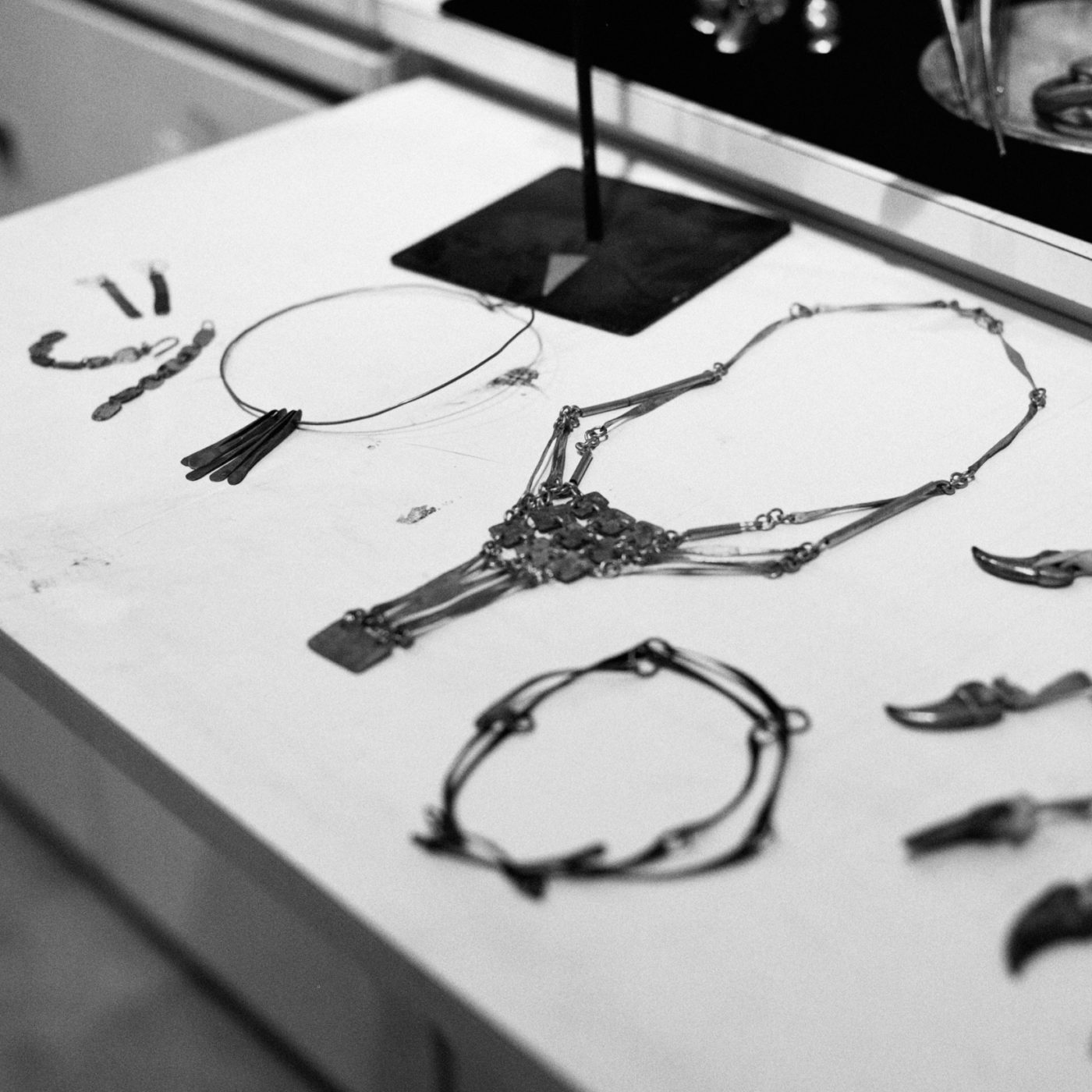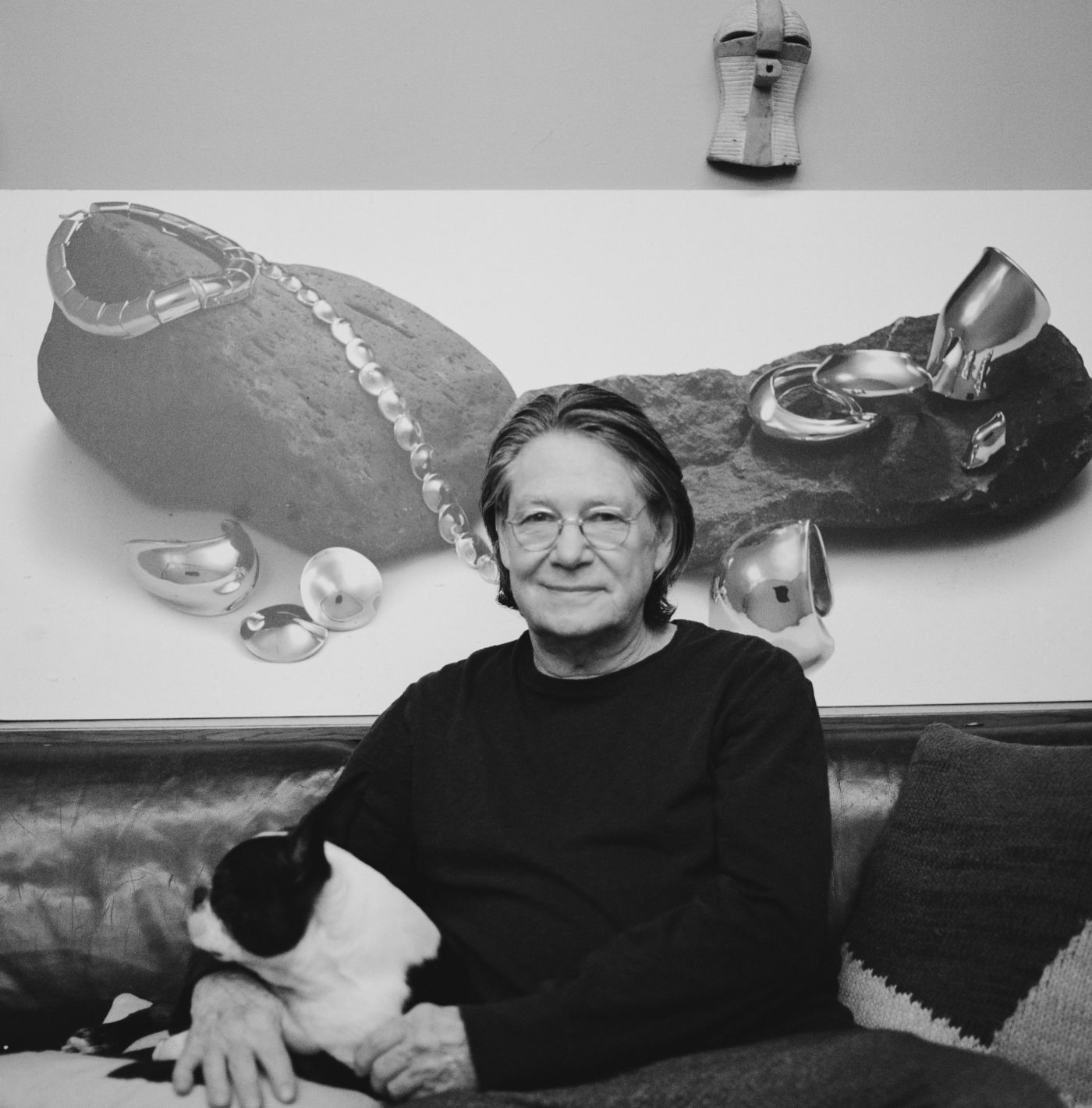The luminous colors of Beppe Kessler’s jewelry are often paired with ordinary materials — such as elm seeds or pieces of wood — to form pieces that have an ethereal quality. A student of textile design, Kessler, who was born in Amsterdam, began her career more than 40 years ago in the visual arts. She also creates paintings and sculpture, which are often in dialogue with her brooches and necklaces. She has no formal training in jewelry, which she regards as a strength of her work.
Kessler is internationally known, with her jewelry in numerous museum collections, including the Rijksmuseum in Amsterdam, the Musée des Arts Décoratifs in Montreal, the Cooper-Hewitt in New York and the Museum of Fine Arts in Boston. In September, Kessler donated 17 of her works — spanning four decades — to the Museum of Arts and Design in New York. “We are thrilled to have Kessler as a collection artist as she is not only exemplar in the field, as evidenced by the number of awards and collections in which her work is included,” said associate curator Barbara Paris Gifford. “Her work also allows the chance to present a cross-disciplinary narrative about a designer who traverses many mediums.”
Kessler has described her work as “miniature sculptures composed of age-old and contemporary materials, brazenly combined and not bound to the traditions of jewelry making. They express my feelings and thoughts about life. They invite touching, and they tell a story.”
Jennifer Altmann: I am fascinated by the fact that you keep careful records of every piece you have created, and who owns each one. You must be very organized and disciplined! Can you describe your system, and why you take the time to maintain those records.
Beppe Kessler: Maybe it looks very well organized — it actually is — but it is also necessary to deal with the chaos in my head of working on different projects at the same time: the constant stream of thoughts about my work and preparing for exhibitions. At the start of my career, I kept all those things in my head and I perfectly knew where the work was going to be exhibited, who bought a piece, and in which gallery it stayed in consignment. And then one day you realize it occupies too much room in your head.
In the early nineties, I start to give my work an artist number — for example, 1995 — and that was the beginning of making the books. Every work has a number, a photograph, dimensions and weight, where it is, who bought it. The books are precious to me: the work can go into the world at the moment when it is recorded and the image is in the book. It costs some effort to do this, but it also gives me rest and concentration. I always can look things up. And recently I saw the fruits of my efforts when I had to choose works for my retrospective exhibition at the CODA Museum in 2019 and asked collectors to loan pieces.
JA: Many of your pieces are named. Some of my favorite titles are “Everything will be all right,” “Playboy” and “Silence.” Talk about your process of coming up with titles and how they express your vision for an individual work.
BK: Sometimes the title is first, and then I start to work. Sometimes when I am working, the title suddenly pops up. The working process is partly unconscious and intuitive. There is an intelligence in the hands. It is a constant dialogue between hands, eyes and thoughts. Material evokes thoughts you were not aware of before. The material speaks a language, and I have to listen. Material matters, such as when I found out that connecting a light material with a heavy material caused — due to gravity — a movement. The title everything will be all right was logical.

JA: Your jewelry is often in dialogue with your other main practice, which is painting. Can you give me an example of the back-and-forth that happens between the two?
BK: A year before I made the collection ocean of time I was painting, using three kinds of fabrics stitched to each other. It gave the painting a landscape-like look, a horizon, a distance. The paint makes a different structure on linen or wool, an interesting “gift” of the material. I was daydreaming about time, and the idea came to literally make time that rests in your hands.I translated the three fabrics of the painting into three materials glued together for the brooch ocean of time.


JA: You’ve said you want the technique of how a piece was made to have some mystery. Can you expand on that?
BK: I do not want to make a piece that is too easy to be read, that you immediately see how it is made or from what kind of material it is made. It is not interesting at first sight. It even can be distracting. The work doesn’t deal with mere techniques or materials. Thoughts behind the work are more important.
I want people to look carefully, to be surprised, to wonder, What do I see? A technique is a way to tell something, not an end goal on its own. To master a technique is necessary, but you have to transcend the technique to write a poem with it, and that is difficult and takes time. Moreover, I want to surprise myself, to extend my abilities, to find new ways. That keeps you going as an artist.



JA: Your training is in textiles. You have no formal jewelry training. How has that affected your work?
BK: In the beginning I was unsure about that fact and thought it was a disability, something I missed. But I turned it the other way. It became my strength not to master traditional soldering, for example, or in general not to know about do’s and don’t’s.
I have to find out myself if it is possible in another way, to make my own rules, be inventive.
It surely has affected my work. It leads to another path in many different ways — for example, by using a textile technique such as embroidery on an unusual material, balsa wood. Every time you stick a needle into the wood, the wood is destroyed, but at the same time it gets stronger because of the criss-cross threads.

JA: Talk about why you choose some of the non-traditional materials you use.
BK: It started with the rubber band bracelet that I first made in 1980. You have to look twice to realize it is made from ordinary rubber bands. Years later I changed the rubber bands into O-rings because they have a longer life. But still people prefer to wear the ordinary rubber bands.
I like to make something out of nothing. It is a challenge to work with worthless materials, humble materials found or picked up anywhere, to give them significance. In fact, the collection of brooches Signs of Life (2017-18) is also built on nothingness.
The materials I use for my compositions are often plain and of no value. It can be anything: frays, thread, slate, pieces of textile, pieces of wood. In short, that which remains. In the process of re-arranging them, I am giving them new life and meaning.
Materials carry a wealth of meanings. They are often connected to personal memories, but in my work I am looking for a more universal kind of poetry. There is beauty in those daily things you think are worthless. Covered with acrylic, shaped as a magnifying glass, you see them with different eyes and they even get a kind of eternity. More important than beauty is that materials tell a story. It is my philosophy. Listen to the material. Material is the vehicle of my thoughts.
Another example is the necklace cycle of life. It is made of leaves, rotten leaves, elm-seeds, elm-wood, a feather and, yes, I used a gold chain, I admit, to celebrate the humble things even more.


JA: Your use of color in your recent work with brooches is very distinct. Can you talk about what you are trying to capture with those pieces?
BK: The encounter brooches, from the collection Signs of Life, are composed from three or more elements, each with different materials. Colors are very important in my work, in the paintings as well as in the jewelry. There must be a balance in the work, a balance of form, material/structure and color,but not too predictable. Sometimes I have to use clashing colors, or combine natural and artificial materials. Color always is connected by the material. Sometimes the basic color of the material is enough without adding color. Sometimes I add semi-precious stones with a clear color in the composition.

JA: Your themes often come from elements that are invisible: wind, time, warmth, nothing. What draws you to those themes, and how do you wrestle with the challenge of expressing such abstract ideas in jewelry?
BK: I am a philosophical person. Both jewelry and painting means questioning and always raising new questions. They mark my development, an ongoing process of looking for new possibilities and inventing my own language.

It is fascinating to focus on the invisible forces, like wind, time, nothingness. In a very modest way, I try to answer questions about them, try to come closer to an understanding, and also try to make the work universal in a way that other people recognize something. It is not that I pretend to have a message, but it is the reason why I am an artist.


Jennifer Altmann is a freelance journalist who has written for The New York Times, The Washington Post and Art Jewelry Forum. Connect with her at jenniferaltmann.com.
Our thanks to Beppe Kessler + Jennifer Altmann for bringing this dynamic conversation to Future Heirloom. Interview written and conducted by Jennifer Altmann; Image credits as noted, provided by Jennifer Altmann. Feature edited, compiled, and formatted by Jackie Andrews.








































